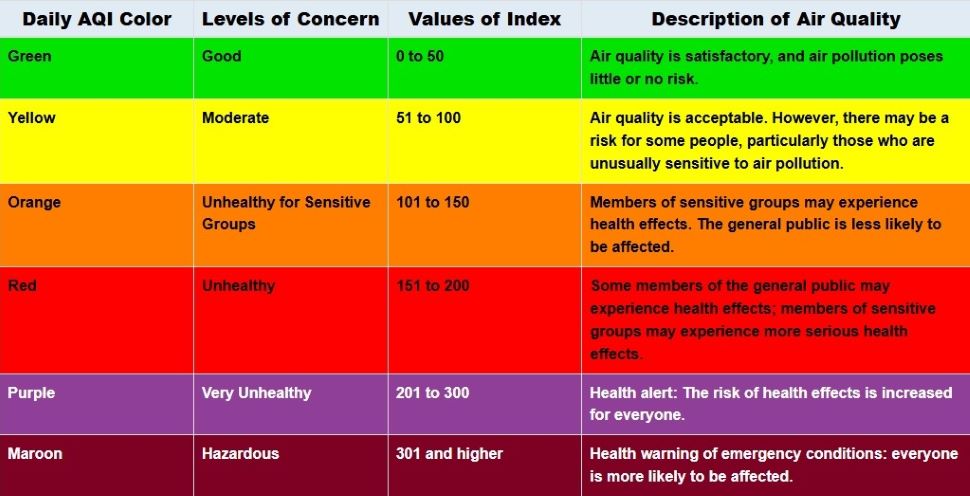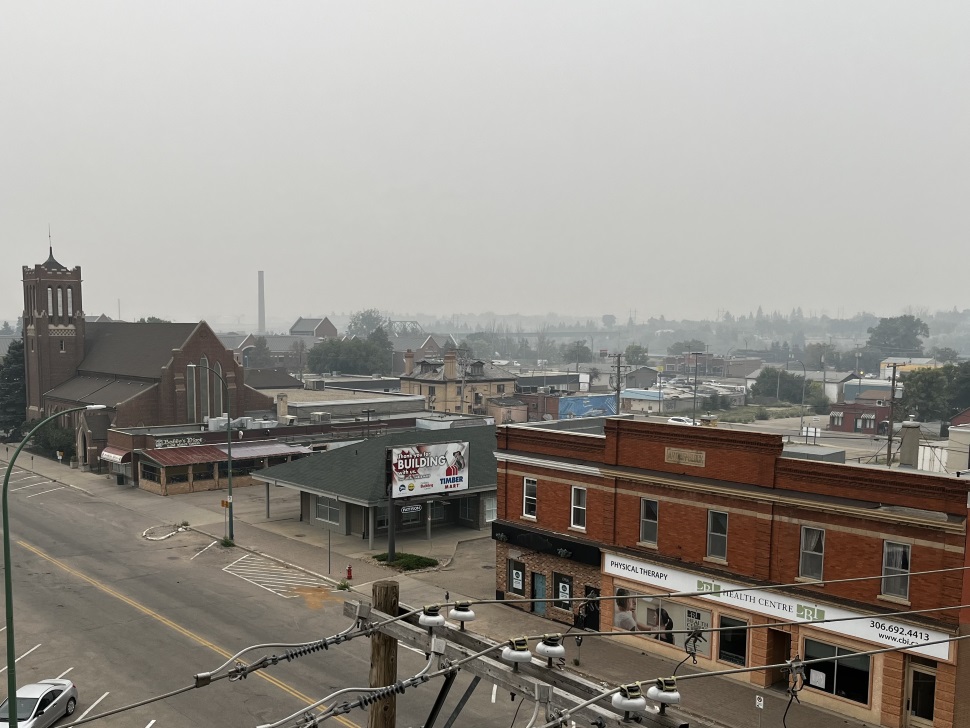After nearly two days under an Air Quality Warning issued by Environment and Climate Change Canada, we're taking a look at how conditions here in Moose Jaw (and Southern Saskatchewan) stack up when compared to other, more densely populated areas.
IQAir.com utilizes the US Air Quality Index to report on air quality by testing for levels of five major pollutants; ground level ozone, particle pollution (also known as particulate matter, including PM2.5 and PM10) such as those found in the wildfire smoke, carbon monoxide, sulfur dioxide, and nitrogen dioxide.
These levels are recorded at over 32,000 stations across the planet, including several stations spread across Saskatchewan. That information is then recorded and displayed on a scale from 0 to 300+ and colour-coded by level of concern. These levels are shown in the chart below:

Moose Jaw's air quality rating is monitored by a station at the Holy Trinity Catholic School Division Board Office located at 445 13th Avenue NE, which, according to IQAir.com at the time of writing this article, is currently showing a US AQI value of 123 or Unhealthy to Sensitive Groups. That may seem high, but our US AQI values actually peaked yesterday between 11 a.m. and 12 p.m. at a staggering 208. While these levels are concerning, relative to normal air quality values for the city, they aren't the highest in the province.
That distinction goes to our neighbours to the east — at least as far as major population centres go — with air quality values of 125, 135, 139 and 140 reported in Melville, Yorkton, Regina, and Indian Head, respectively.
Although Katepwa Beach is not a major population centre, it currently has the highest airborne pollutant levels in southern Saskatchewan with levels there are placed firmly in the "unhealthy" range with a US AQI of 160.
Although no stations are present in the area, much of East-Central Saskatchewan from Tobin Lake to south of Wadena and the Manitoba border are also projected to be within the "unhealthy" range.
To put these levels into context, these levels bring Moose Jaw in line with the top 10 major cities with poor air quality listed by IQAir. Our city would sit between Delhi, India — which has a metro area of over 34.6 million people and is currently ninth place at 102 on the index — and Santiago, Chile, the capital of Chile with over 6.2 million inhabitants that holds eighth place with 134 on the index.
Meanwhile, levels of airbourne pollutants at Katepwa Beach are firmly in between Kinshasa, Democratic Republic of the Congo, and Jakarta, Indonesia which hold the second and third spots in the top 10 with US AQI values of 174 and 158, respectively.
By contrast, the top three cleanest cities in the world —by US AQI values — place Kraków, Poland in the number one spot with a US AQI value of 8, followed by Australia's Sydney and Canberra with values of 13 and 16 in the second and third place spot.
Canada's contributions to the cleanest cities list, again by US AQI values, are Toronto in eighth place with a US AQI value of 21, Vancouver in 15th place with 24, and Montreal in 16th with a value of 26.
The Air Quality Warning for the Moose Jaw area has since been lifted; however localized smoke is still in the forecast until tomorrow. Those that are curious and would like to view a live map of air quality levels across the planet can do so by checking out the IQAir website.
